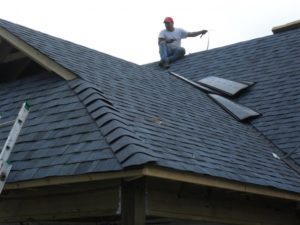Is It Time to Replace Your Shingles?
Know when it is time to run for cover — meaning contact the professionals from Harbor Roofing and Siding. A strong roof above your head is very important if you have become used to having a leak-free, cozy, and warm house.

If your house has a shingle roof, it’s vital to have the ability to tell when it’s time for these shingles to be replaced. Sometimes, homeowners attempt to put off roof replacements, trying to save money; however, the issue with that plan is that a roof that is left up past its time may begin to fail and leak, as well as cause very expensive damage to the remainder of the home. If you have any questions about your roof call us (910) 262-5508 we can help answer any questions you have.
It is possible to save yourself money, time, and a lot of headaches by getting in touch with the roofing professionals at Harbor Roofing and Siding if you see that…
1) The shingles are more than 20 years old
Roof longevity depends upon a variety of factors’; however, the majority of typical roofs are built to last about 20 – 25 years. If the shingles on your roof are more than 20 years old, it probably is time to get them checked out even there does not seem to be any issues with them.
2) The shingles are deteriorating, curling, and broken
The most obvious sign that the shingles need to be replaced and know that it’s time to call the roofing professionals is if they’re broken, bent, missing from specific spaces of the roof, or winding up in your yard after strong winds. Shingles which are getting on up there in age also will likely become brittle and dry, which is going to leave them appearing bent and curled. What’s more, brittle shingles might start deteriorating and breaking off into tiny granules which typically wind up inside the gutters.
3) The energy bills are increasing
An older roof that needs to be replaced acts as a poor insulator, which makes it more difficult to sustain the temperature of your house. If your summer cooling costs and winter heating costs tend to increase higher and higher each year, odds are that the roof is the culprit.
